Strawberry Hill Elementary 24-25
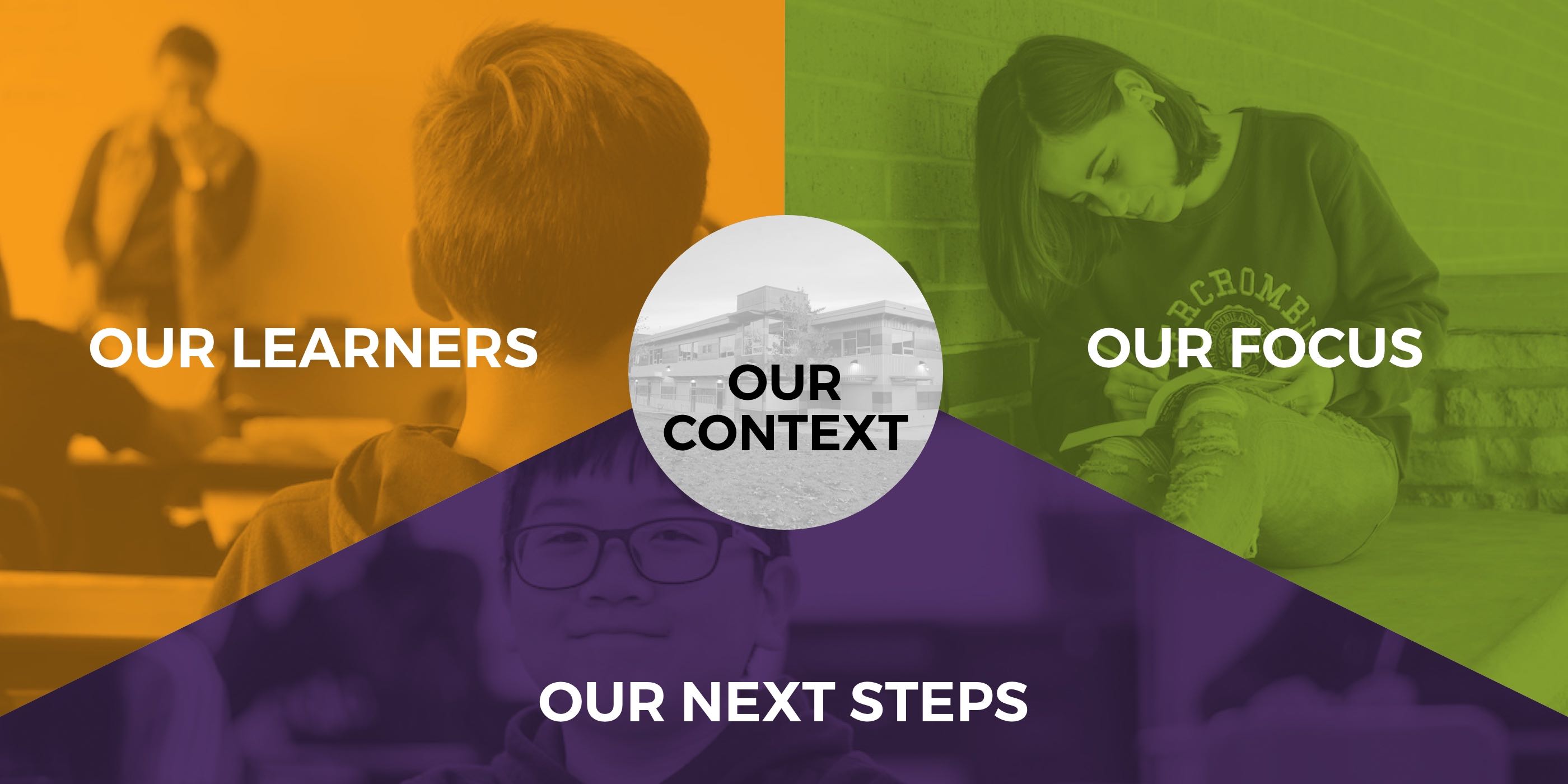

OUR CONTEXT
OUR LEARNERS
Our Learners
At Strawberry Hill, we are a diverse community with a shared goal: to create a school where everyone knows they belong. We strive to ensure that every member of our community is treated with kindness and respect, and that differences are celebrated. Our mission is to make every child feel seen, heard, and valued. This year, we have worked hard as a school community to reflect on what we need to do to foster a true sense of belonging. Together, staff and students identified key actions we must all take to make our school an amazing place to learn each day. From this collaboration, we created the Jaguar Promise—a commitment made by everyone at Strawberry Hill to always try our best, respect others, show kindness, and make sure everyone feels included. When we live these values each day, we help build a school where every learner feels they truly belong. Research shows that students who feel a strong sense of belonging attend school more regularly, are more motivated to engage in learning, and experience improved well-being and academic success.
Below is a photo of our Jaguar Promise bulletin board, signed by our entire school community, and a poster that is displayed in each classroom and throughout the school as a daily reminder of our shared commitment.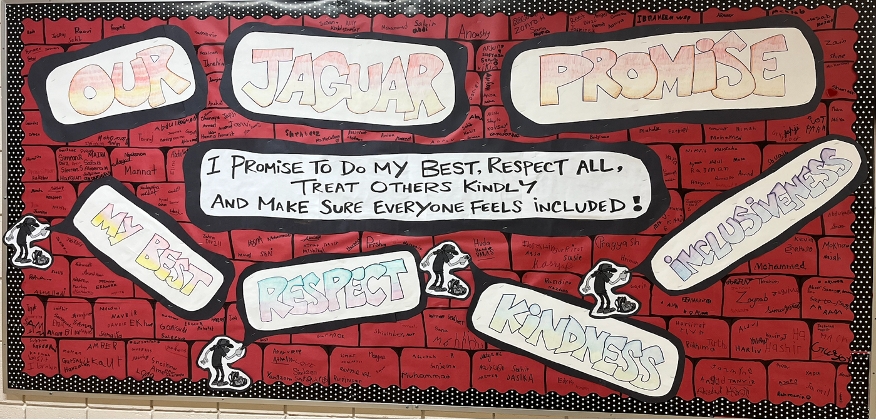
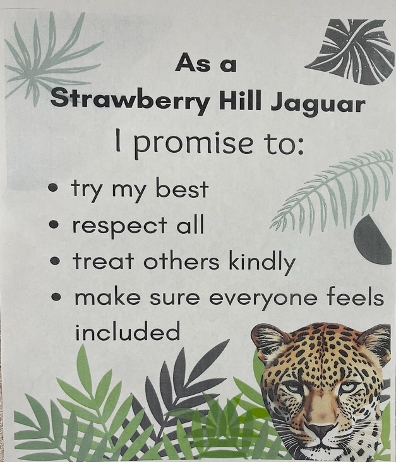
As part of our commitment to nurturing inclusive, thoughtful, and engaged learners, our school recognizes the power of literature and intentional literacy instruction as key drivers of both academic achievement and social-emotional growth. We understand that supporting students in developing their literacy skills is crucial in helping them form the foundation for all future learning across all subject areas.
Our literacy instruction goes beyond teaching students how to read and write—it is designed to help our students to think critically, communicate clearly, and engage meaningfully with the world around them. Students are encouraged to compare perspectives, interpret meaning, evaluate arguments, and ask thoughtful questions such as "why" or "what if" questions—core habits of critical thinkers. When students are given the opportunity to read and discuss a wide range of stories and perspectives, they develop not only strong literacy skills but also empathy, cultural awareness, and a deeper sense of connection. Literature helps students understand themselves and others, fostering respect, curiosity, and belonging within our learning community. By intentionally selecting texts that reflect a variety of cultures, identities, and lived experiences, and by using inclusive teaching practices, we create a classroom environment where every student feels seen, heard, and valued. When students see themselves—and others—represented in what they read, they are more likely to feel confident in expressing their own ideas and more open to understanding those of their peers.
Through this approach to literacy instruction, we are not only building skilled readers and writers—we are preparing thoughtful, compassionate, and critically-minded individuals ready to thrive in a diverse and evolving world.
Across all grades our learners explore stories and other texts to help us understand ourselves and make connections to other and to the world.
Our learners can use personal experience and knowledge to connect to text and deepen understanding of self, community and world.
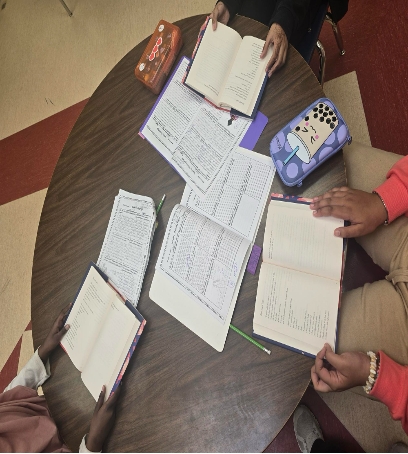
Students are participating in a book talk where they share their ideas about the text they are reading.
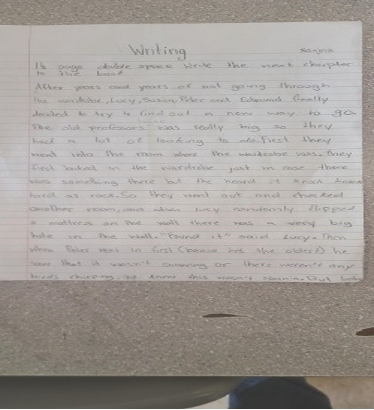
After completing a novel study, students were asked to use their creativity and write the next chapter in the novel they had read.
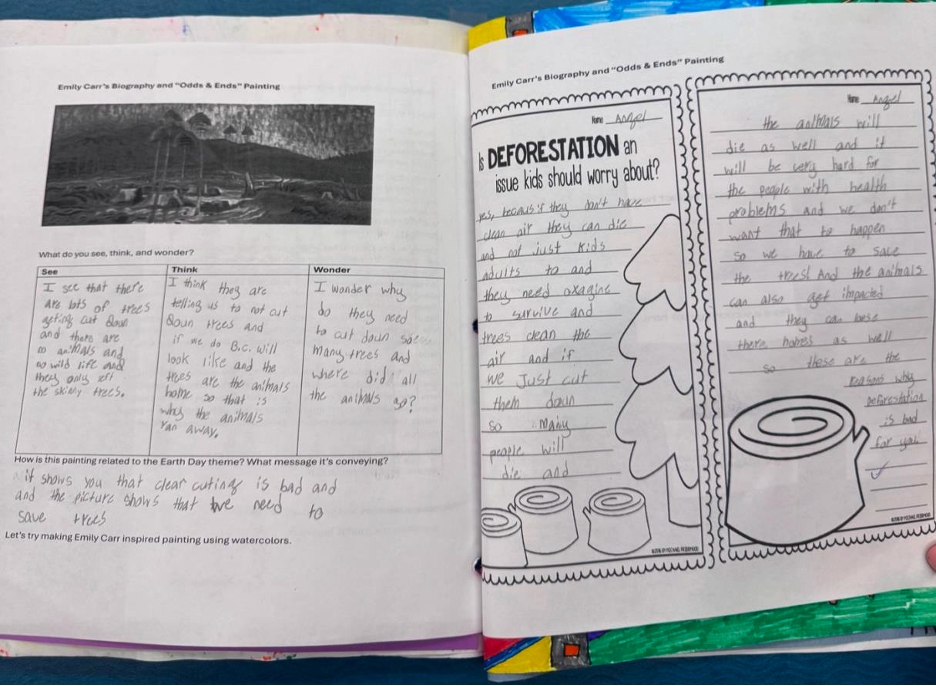
Students read Emily Carr’s biography and discussed her painting Odds & Ends. Students then used the See, Think, Wonder graphic organizer to share their thinking about the painting. Next they shared their opinion on deforestation based on their prior knowledge and the new knowledge acquired from Emily Carr’s biography and her painting.
Our learners access and integrate information and ideas from a variety of sources and from prior knowledge to build understanding.
Students participate in our annual Speech Fest for grades 4 - 7. Students wrote a speech on a topic of their choice. They researched the topic using multiple sources of information and their own background knowledge. Next students wrote either an informative or persuasive speech on their topic. Class finalists were selected to share their speeches at our school wide Speech Fest. Speech Fest allows our student to learn research skills, how to work through the writing process and their presentations skills. When students feel confident in expressing themselves—whether through speaking or writing—they begin to clarify their own thinking. The process of organizing thoughts, justifying opinions, and responding to feedback helps them analyze their reasoning and consider alternatives.
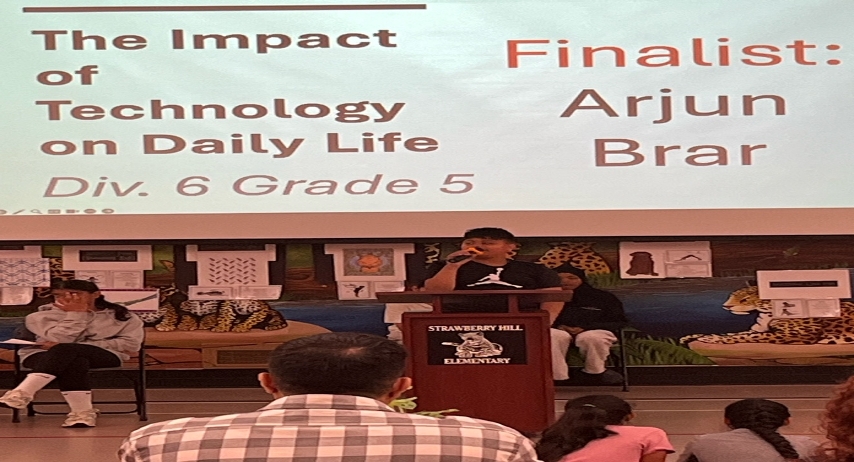
A student presenting his speech at Speech Fest.
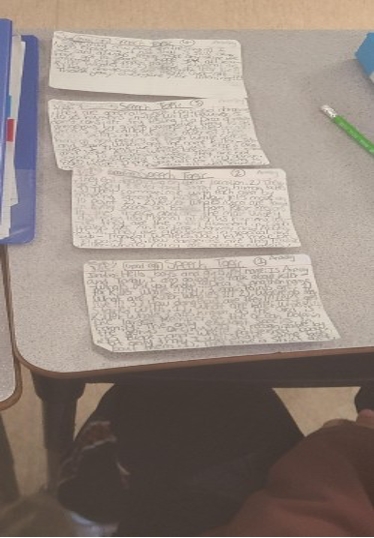
A student's cue cards with speech written on it.
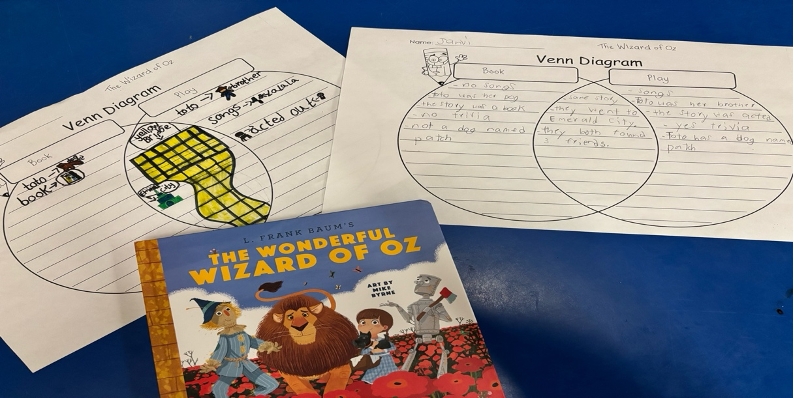
The class read the story book and then watched the live play production at Princess Margaret. Using the Venn diagram, we compared the information and ideas from the two sources.
Our learners respond to text in personal and creative ways.
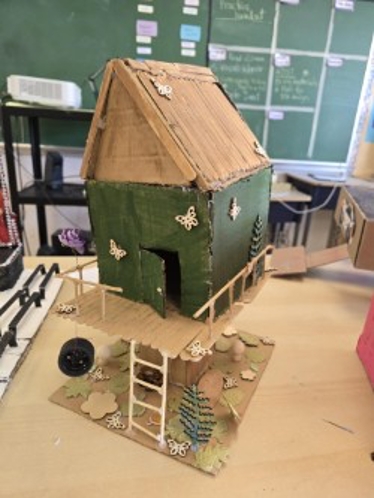
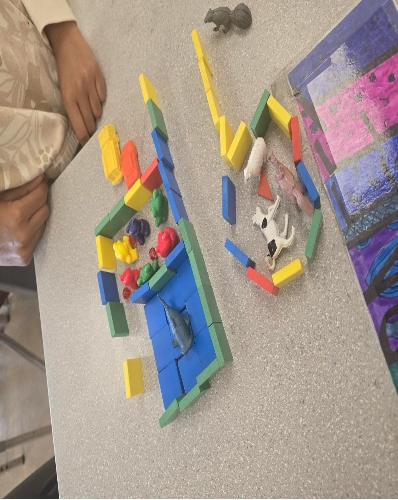
Students use manipulatives to recreate the setting of the story they are reading.
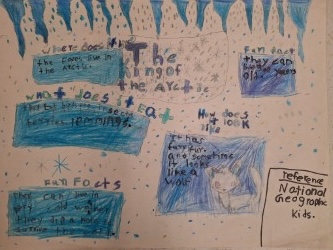
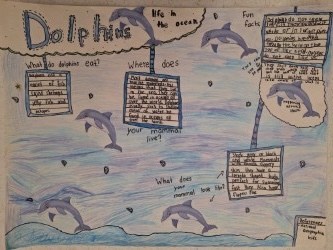
Above are examples of students who completed a research project on a mammal. They used the skills they have been learning about graphemes to write their facts and share their understanding of the mammal.
OUR FOCUS
Every day at Strawberry Hill our team of educators provide a variety of educational experiences that prepare our learners for a world in which they think creatively and critically and communicate skillfully. Our students are learning to use developmentally appropriate reading, listening, viewing strategies to make meaning. The ability to access and comprehend text is essential for all learners’ academic success, social development, connection and overall well-being.
This year we are focused on the learning goal of:
- Using developmentally appropriate reading, listening, viewing strategies to make meaning.
Across all grades our teachers provide students with learning opportunities aimed at increasing developmentally appropriate skills and strategies to make meaning of what they are reading. We monitored the progress of our cohort that has grown to include a mix of primary and intermediate classes to highlight and determine overall successes and gaps.
In our cohort, we used an explicit and systematic approach to build foundational reading skills helping learners to develop an awareness of the segments of sound in speech and how they connect to the letters of the alphabet.
Through our research this year we know this method of instruction works best to improve and promote how students learn to read. When literacy lessons are structured this way students master the core skills of how to decode words, analyze words parts, write the sounds they have learned when writing words and recognize letter patterns in text. Through this process they are developing their fluency and comprehension, and learning how to become confident readers. It is critical to recognize the interconnectedness of foundational skills to move learning forward.
Below is an example of students building their phonemic awareness through blending and segmenting words. Students were asked to listen to a word and use letter tiles to place the phonemes they know for that sound. Learners are working on connecting their understanding of phonemes to recognize graphemes quickly through both visual and auditory processes.
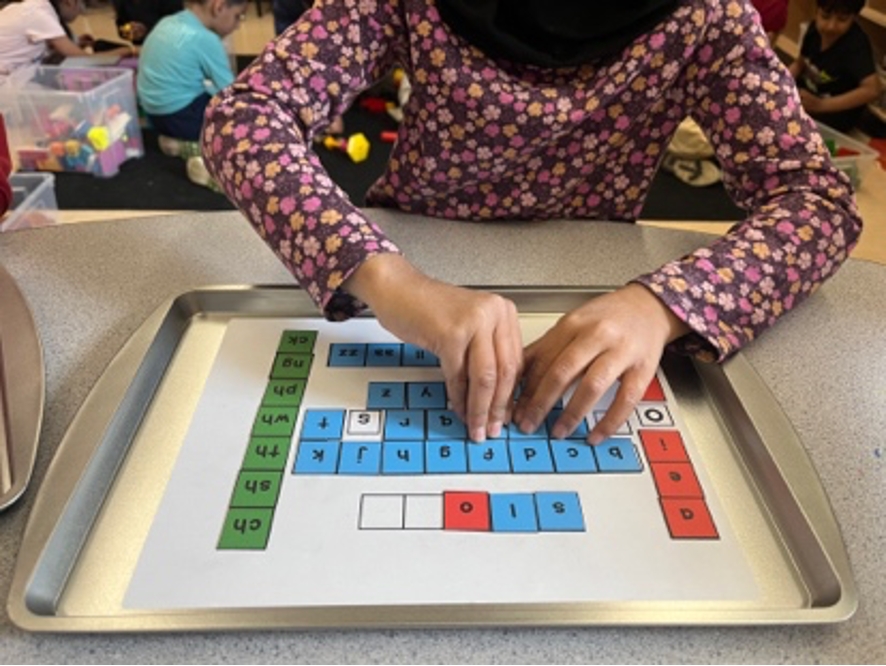
Students then work to encode the sounds they hear and recognize how a change in letter combinations forms new words. They are practicing previously taught concepts to develop their ability to recognize sounds quickly and automatically.
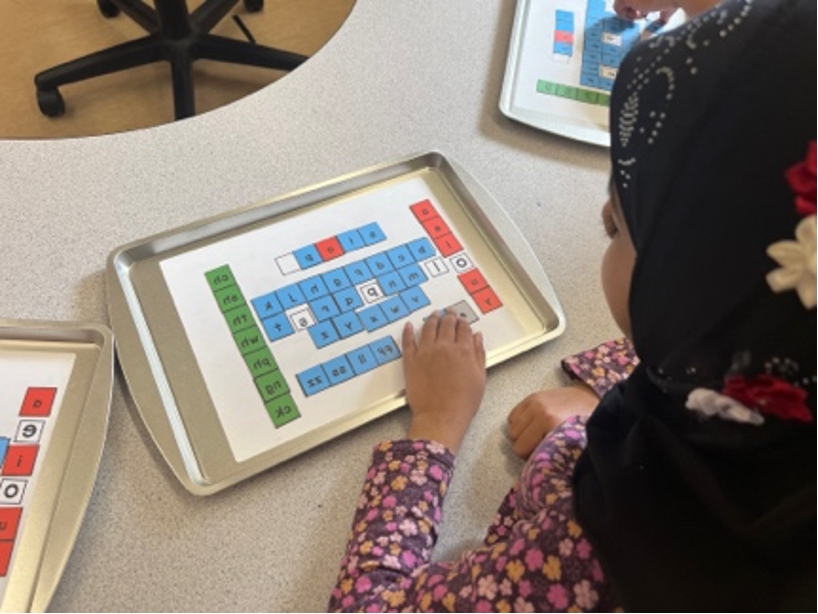
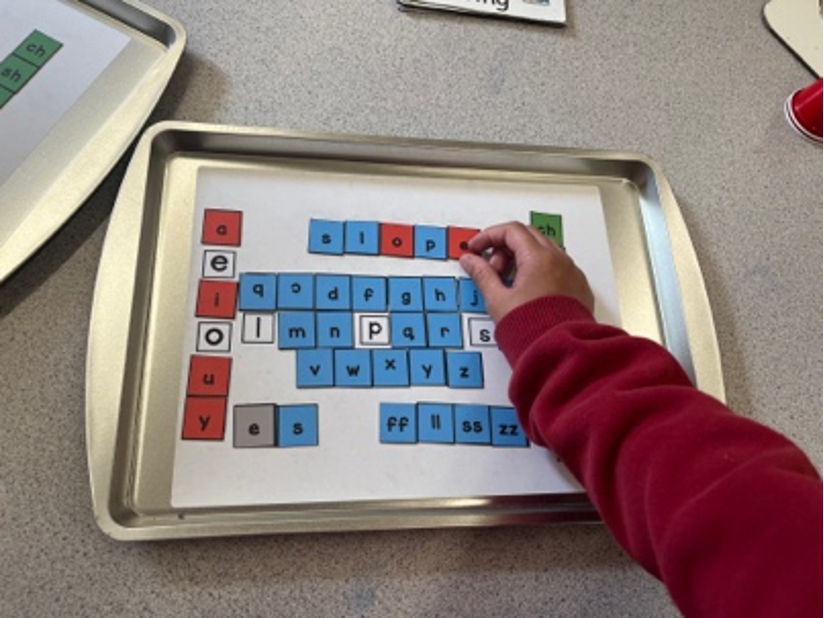
Below is an example of how new concepts are introduced regularly to build upon students’ knowledge of more complex word patterns. By practicing a variety of word work they become more confident with their decoding and encoding of words.
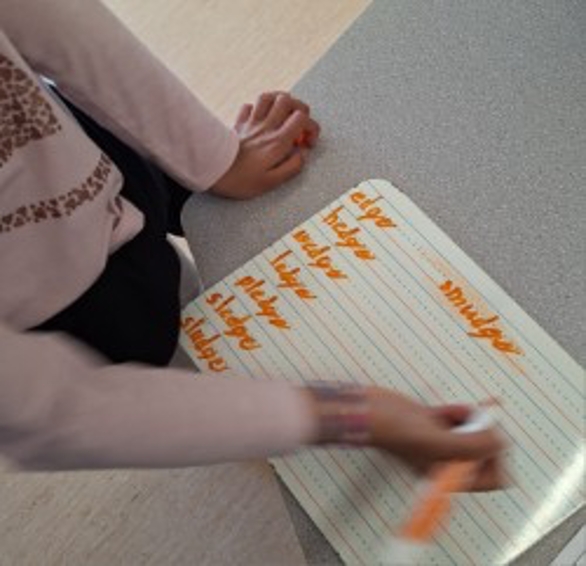
Studying irregular words that do not follow traditional patterns of spelling is also important for learners to understand. They learn that although a word may not be fully decodable, there are parts of the word that can be!
Learners do not solely rely on visual memorization, as receiving instruction on irregular words should help students’ orthographic mapping- the process by which the brain connects sounds and spelling. This allows for effortless retrieval of words to promote accurate and fluent reading.
Below are examples of irregular words that are partly decodable.

As students learn these concepts, they will read sentences, write sentences and read a passage where all the concepts they have learned may be represented. Teachers are able to be responsive to the needs of the learners in their classrooms and support moving the learning forward.
Below is an example of a learner working through a connected text that allows them to practice new letter pattern concepts (ew, oo u_e) and interleaved concepts they have previously been taught.
By focusing on the foundational skills of reading and purposefully guiding students in an explicit and systematic structure- more students are demonstrating that they can read proficiently with fluency and comprehension, while developing their joy for reading.
OUR NEXT STEPS
Our Next Steps
It is demonstrated, through evidence provided by our cohort of students and reflected in the larger group, that our focus on improving the use of foundational reading skills is positively impacting learners. Our teachers tracked the progress of their students’ reading learning goal:
- use developmentally appropriate reading, listening, viewing strategies to make meaning.

September | 45% | 30% | 25% |
|
June | 10% | 40% | 30% | 20% |
As noted in the graph, students progressed in using reading, listening and viewing skills to decode and encode words and make sense of developmentally appropriate text. Growth was demonstrated in our September to June results. For our literacy goal, we saw a decrease in the percentage of students who are Emerging (-35%) and an increase in those who are Developing (+10%). Similarly, we saw an increase in the percentage of students who are Proficient (+5%) and an increase in those who are Extending (+20%). More descriptive evidence of learning that is specific to our literacy goal is highlighted below.
Fifty percent of the students in the cohort are now proficient in their ability to use developmentally appropriate reading skills such as decoding to make meaning of grade level text they read – compared to 5 % who demonstrated proficiency earlier in the year. Most of our learners are able to fluently read and comprehend text assigned. They are using their decoding skills which include segmenting, blending and recognizing more complex word patterns. In our cohort, many students experienced some level of success. 50% of students still require support, however that number has decreased from earlier in the year when 75% of our students required support. This will remain an area of ongoing focus and priority.
An example of this success is a student that entered grade 2 only reading Consonant Vowel Consonant words such as. cat and bit with some fluency. By June he was able to read some grade level text with automaticity and fluency. He now loves reading and writing and has the ability to persevere through tasks across all curricular areas. He is motivated to engage in learning activities that help grasp more knowledge and extend his critical thinking. By teaching him about he relationship between letters and sounds, he is now able to decode words and make meaning of text read. This has opened up a whole new world of learning for him.
Student learning evidence is gathered in a variety of ways. Teachers use a combination of teacher observations, conferences and student work to determine student’s level of understanding. An example below shows how our students are using foundational literacy skills to make meaning of text.
In their final reading assessment 70% of the students were able read a grade level text fluently and with comprehension. There remains 30% of the students who require further attention in this area.
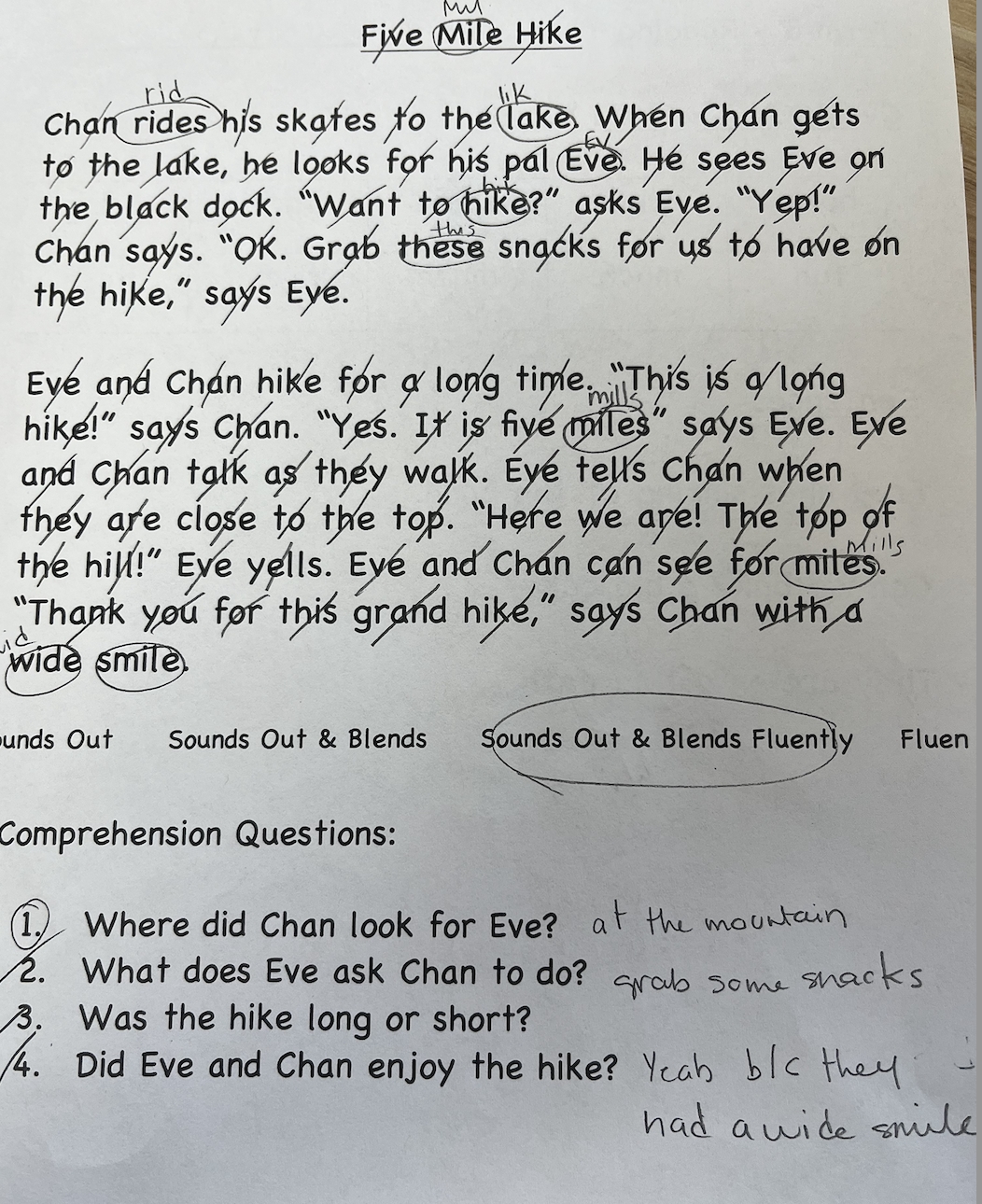
Moving Forward;
After seeing the growth our students have made with their reading ability, we also recognize that 50% of our student still require further attention in this area. We will continue to teach explicit sequential and systematic literacy instruction to support the development of foundational reading skills.
Moving forward, we are going to continue to expand this work beyond the cohort. This will require us to mirror the process and strategies implemented next year.
